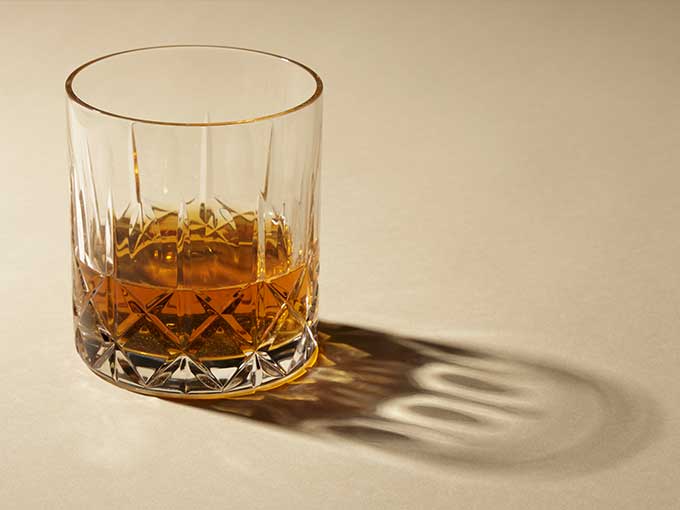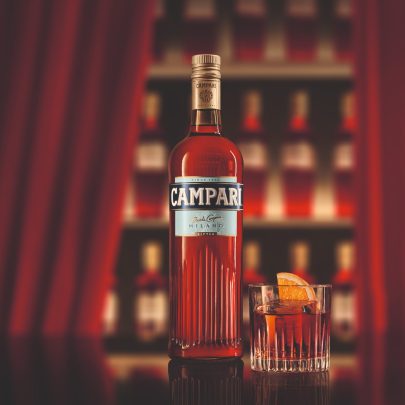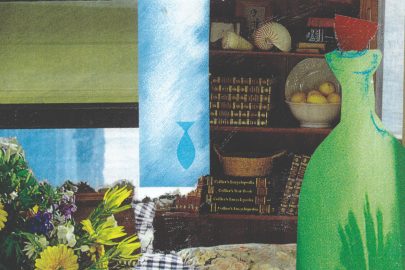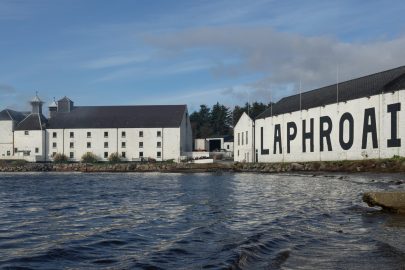May 29, 2019 Drinks
All whiskeys are made from three ingredients; grain, water and yeast. And yet they are all different. Don’t start with a peated scotch, start by having a chat to your bartender. Alex Blackwood attends an Ardbeg whisky tasting and outlines the basics for how to start your journey to becoming a whiskey pro.
As we pass around a lump of peat in the moodily lit Auckland whiskey bar The Jefferson , bar owner Ofir Yudilevich gives what might be the perfect comparison: whiskey is like cheese.
“If I gave you blue cheese, as the first thing you’ve ever tasted cheese-wise, you’re gonna hate cheese. But if I gave you Edam and have you work your way up to blue cheese you’re gonna appreciate it.”
Ardbeg is that blue cheese of whiskeys. It isn’t for beginners but for seasoned whiskey fans, it’s divine. It’s known for having a strong peaty flavour, peat being a soil comprised of very decayed organic matter. Why would anyone want to drink that? Or any drink where you’re just as likely to screw your face up and shudder as you are to actually enjoy it, for that matter? Step into my (imaginary) mahogany and leather-clad office and let me pour you a (metaphorical) drink.
What is whiskey?
Whiskey is any spirit that has been distilled from a grain, any grain (corn, rye, wheat, barley, et cetera), and has been put into oak to mature. All whiskeys are made from just three ingredients; grain, water and yeast. And yet they are all different.
“If you’re talking about bourbon, you’re talking about minimum 51 per cent corn,” Yudilevich says. “In the case of rye whiskey, you’re talking about minimum 51 per cent rye. In the case of single malt, that’s water, barley and yeast. So it is made from that single malt. A single malt is made and distilled in a single distillery.”
An aside – in case you read on thinking this article is full of typos, sometimes I say “whiskey” and other times “whisky”. That isn’t an accident. The “e” comes from the Irish Gaelic form of the word, and was brought to America by Irish immigrants – so it’s whisky if it’s Scottish, whiskey if it’s Irish or American, while New Zealand and Japanese whiskey makers seem to have thrown their hands in the air and said “Fuck consistency, let’s not commit to anything, let’s have a bit of both and use the ‘e’ to connote which style of whiskey we are making.” For the purposes of consistency, I’ll call it whiskey when I am referring to whiskey in general, and use the region’s form when I am referring to Scottish, Irish or American brands. In a way it makes sense, because the style of whiskey tends to differ from region to region.
The different regions of whiskey:
Generally whiskey is made in Scotland, Ireland, America and Japan. But as with wine regions, each country has a different style as well as temperatures, weather and techniques which result in very different products.
“American whiskey is sweet,” Yudilevich says. “It’s made out of corn, typically not aged for too long. Typically anywhere from about two to six years is the norm, so you get all these nice beautiful bourbons.” In Scotland, “Scotch single malts you get all these 25 year old, 40 year old, 50 year old whiskys – you’re not gonna find many bourbons over 10 years old. Single malts are a lot spicier, not as sweet.” A lot of Scottish whiskys are peated (we’ll get into what that is later), smoky and even salty.
And though American whiskey is made in the Irish style, Irish whiskey doesn’t tend to be bourbon. The Irish mainly prefer barley whiskeys and multiple distillations; with each distillation, the whiskey becomes smoother and more purified. It’s less sweet than American whiskey and less smoky than Scotch whisky.
When Japan began making whiskey, they began by copying the Scottish style, but have branched out into trying for a more purified, delicate version. There are exceptions to the rules, but those are the basic categories each country produces. They’re quite different, but as Yudilevich explains, “It’s almost like saying smoked salmon and salmon sashimi: two very different products but they are both salmon.”
How does a whiskey get its flavour?
Despite there only being three ingredients in a whiskey, the flavour varies wildly depending on how it’s made. There are over 600 bottles of whiskey on the shelves at The Jefferson. No two taste the same. How? Well, from different blends of grain, and different lengths of time the mashed grains have been fermented, or aged in barrels.
“Saltiness, sweetness, spiciness, sourness they’re all flavours that you get in whiskey. There’s something like a hundred and fifty flavours that you talk about in whiskey so that’s anything from Christmas cake, to green peppercorns to green apple. There’s all sorts of flavours that you can pick on if you’ve got a really, really good palate.”
Then there are the other sneaky hacks whiskey makers use to alter the flavour. Like the barrels – they are always oak, usually charred white oak. Char makes the colour darker and imparts a toasty flavour, and based on the type of oak and level of char the flavour will be slightly different every time. A whiskey in a smaller barrel will mature more quickly than in a big, 500 litre barrel because more of the whiskey’s surface will be exposed to the air. Whiskey makers will also often put their whiskey in barrels that originally housed sherry, port or (as in the case of Ardbeg’s special release for Ardbeg day, “Drum”) rum barrels to allow their whiskey to take on a little of that liquor’s flavour. Then there’s the location of the distillery the whiskey grows in; the temperature dictated by the location will make a whiskey mature differently depending whether the climate is warmer or cooler.
A whiskey brewed near the sea might take on a salty flavour. Yudilevich says active whisky distilleries on the island of Islay off the coast of Scotland all get battered by the sea, so you might notice a salty characteristic in Lagavulin, Kilchoman, Caol Ila Bruichladdich, Ardbeg, Bowmore, Bunnahabhain and Laphroaig whiskys. The island is famous for the smoky, peaty whiskys and any whisky made there will undoubtedly have “Islay” written on its label.
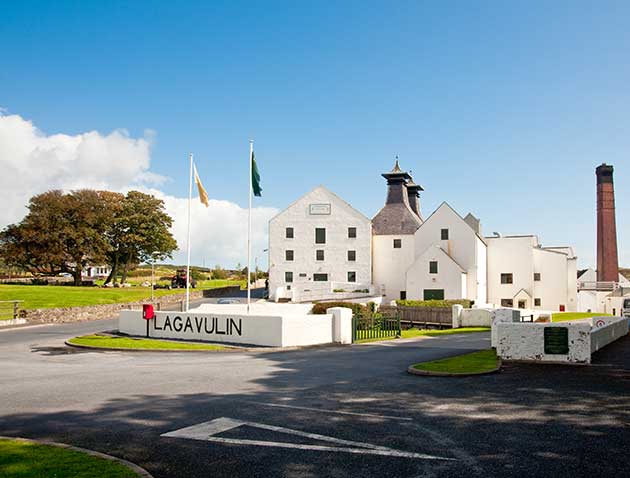
Just when you think that there can’t be any more variations and there can’t possibly be any more not-quite-cheating-the-golden-recipe innovations in the book to add flavour to their drop, there’s more. One stroke of genius is the way the smoky peat flavour finds its way into peated whiskey: by setting an open peat fire in the room the grains are drying. Laphroaig Whisky is famously the most “peaty” whisky. Laphroaig dries their malt grains over a peat fire for as many as 30 hours. In New Zealand, Thomson’s whisky put their own twist on “peaty” flaovur by using the same method but with Manuka wood.
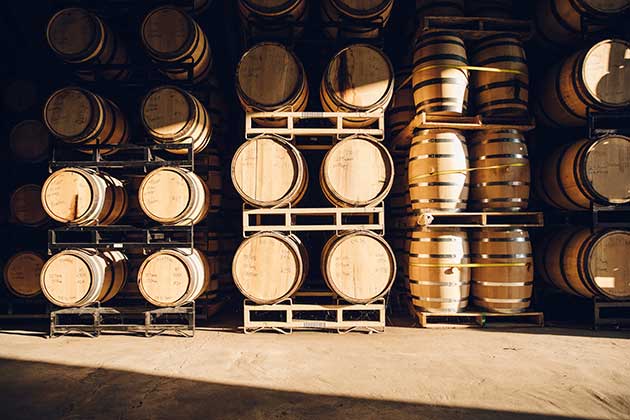
How do you know which of that infinite spectrum of whiskey is the whiskey for you?
At The Jefferson, Yudilevich has a tried and true formula for finding the right whiskey for each customer. “Because our whiskey stock changes just about daily as new bottles come onto the shelves and the old bottles run out, we don’t have a whiskey list. We just say there are 600 up there, come and talk to us and we’ll find you the flavour that you like because there’s 600 flavours up there.
“We try to take the intimidation factor away from it. We break the whiskey down to a few simple categories. American, let’s just say, bourbon which is primarily corn-based and sweet. Or we can say the Islay distilleries; there’s eight and they’re predominantly peaty, smoky whiskies so we can talk about that. So we break it down into a category. Irish or Scottish or Japanese or a blend or a single malt.
“Once we’ve figured out which of the six or seven categories that you’d like, all of a sudden instead of the 600 whiskies up there, we’re only talking about 70.
“And then we can ask you ‘Do you like something peaty or non-peaty’ and that cuts it down to half again and I can ask you ‘do you want something sweet or something spicy?’ and you say sweet and it cuts down to ten and before you know if you’ve got three different whiskeys in front of you.”
And what about beginners who don’t know what they want?
You can recreate that process at any bar or liquor store, but if you’re starting from no knowledge at all, trying a few at a well-stocked bar or tasting is a good way to go (because if you buy the whole bottle and don’t like it, you’re a bit stuck.)
Again, Yudilevich reccommends you hand over the reigns to an expert to help you pick something you’ll like.
“What I would suggest to them first and foremost is to not look at the menu to pick on price and on name because the first thing people do is they go for a name they can pronounce and half the time, it’s the wrong thing. What I would suggest it to have a conversation with your bartender. Someone who knows and can decide from what you’re telling them.’
“If you start off with something that’s not spicy but it’s sweet like a bourbon – something like a Buffalo Trace which is nice and sweet and easy to drink or a Jameson which is an Irish, triple distilled – that’s your starting point. And you can work your way up to the big Ardbeg and the big Laphroaig. The big flavours.”
Whiskey is having a moment
When looking into opening a cocktail bar, Yudilevich noticed whiskey was the fastest growing category of the spirit market. Demand is coming in large part from women, contrary to whiskey’s gruff old-man-in-an-armchair image. What attracts whiskey drinkers, Yudilevich, reckons, is that it isn’t a drink to do shots of. It’s a slow, considered drink to enjoy over an hour or so and appreciate, particularly because it’s made over a minimum of three years, as opposed to five or six hours like a vodka or gin can be. It’s not loaded with sugar, it’s gluten free, and the niche flavour attracts people who want to take the time to enjoy it.

